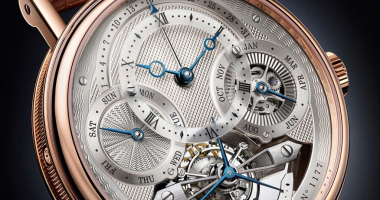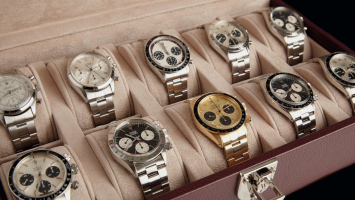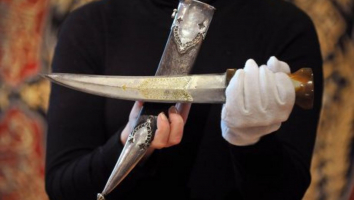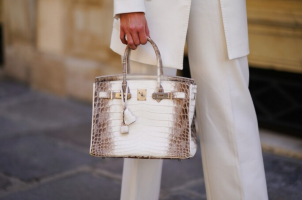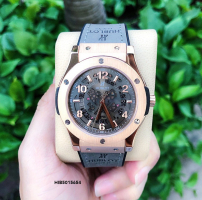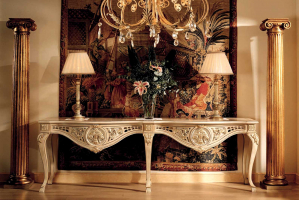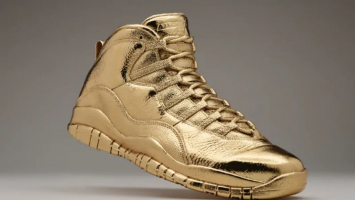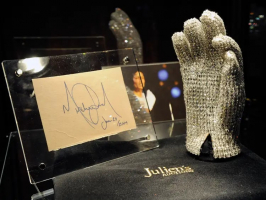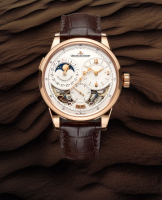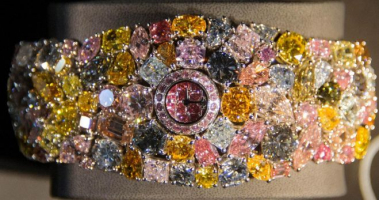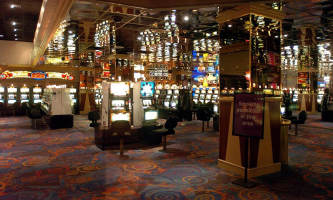Top 6 Most Expensive Cartier Watches Ever Sold In Auction
Cartier is a well-known name in the watch industry. The famous brand focuses on the aesthetics and functionality of their timepieces, resulting in high-end ... read more...luxury watches. Cartier watches are known for being precise, showy, one-of-a-kind, and long-lasting. Even though it's a replica watch, possessing a Cartier is a dream come true for watch collectors and fashionistas. And the pricing reflects the refinement and good taste. Here are the most expensive Cartier Watches ever sold in auction.
-
In 1943, Pierre Cartier presented the Cartier Victory Clock to Franklin D. Roosevelt as a token of appreciation for America's participation in World War II. This is without a doubt the most important Cartier clock ever madeWith an 8-day power reserve and silver, onyx, and nephrite construction, this iconic Cartier clock displayed five time zones: London and Paris, Berlin and Rome, San Francisco, and Tokyo. Over a decade ago, in 2007, a Sotheby's auction sold the Cartier Victory Clock to an American collector for $1.6 million.
The clock is made of onyx with nephrite and silver accents and features a main dial for mean-time in New York/Washington, D.C., as well as four subsidiary dials labeled to keep time in London/Paris, Berlin/Rome, San Francisco, and Tokyo, all of which were important strategic locations for the Allies during WWII. Each time zone's hours can be changed separately, while the minutes advance in tandem.
Price: $1.6 million
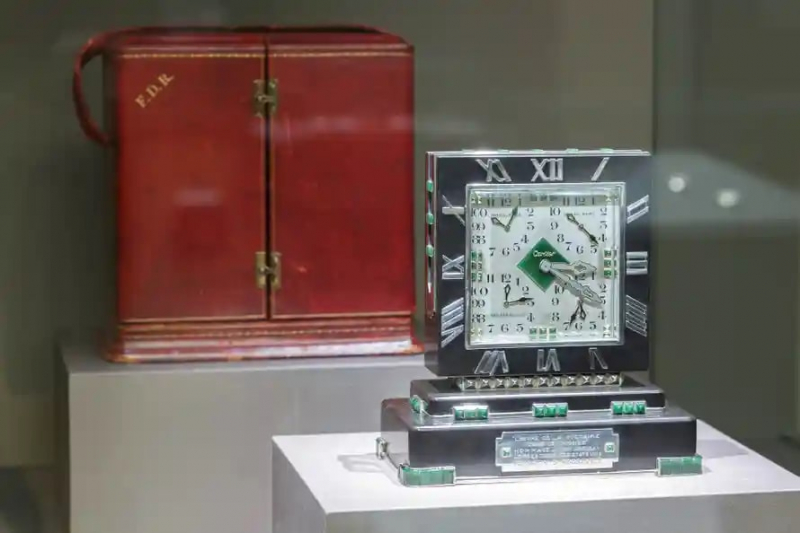
Photo: The Guardian 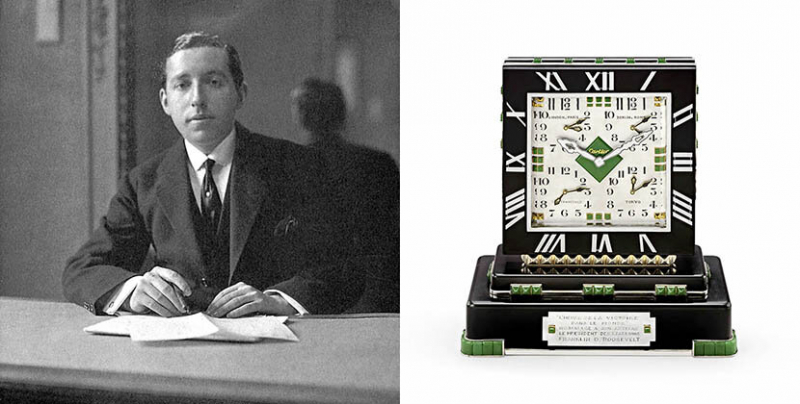
Photo: Rescapement. -
Ranked second in the list of the most expensive Cartier watches ever sold is the first Cartier Tortue Minute Repeater. It was sold in 1931 and was found in Cartier's archives in 1929.
When Antiquorum sold this Tortue Minute Repeater in 2002, the lot description stated that it was the "only minute repeating watch known to have been created by Cartier during the Art Deco era" (more on that claim in a minute). In 1929, Cartier registered the yellow gold watch, which was eventually released in 1931. It has Breguet blue steel hands and a European Watch & Clock Co. movement, which was a common supplier of Cartier movements at the time. The gongs that chime the time are triggered by the slide on the left side of the casing. It was powered by a rhodium-plated M. Cal. 11"' movement with 18 jewels, a straight-line lever escapement, and a Breguet balance spring. It was 32 mm in diameter and had Breguet blued steel hands.
This watch has also been published in books, according to Antiquorum, and was previously featured in an Antiquorum catalog from 1982.
Price: 993,500 CHF ($1 million)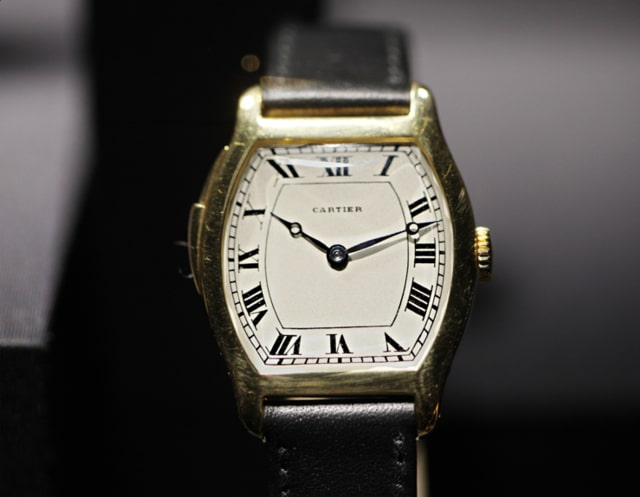
Photo: Troisanneaux 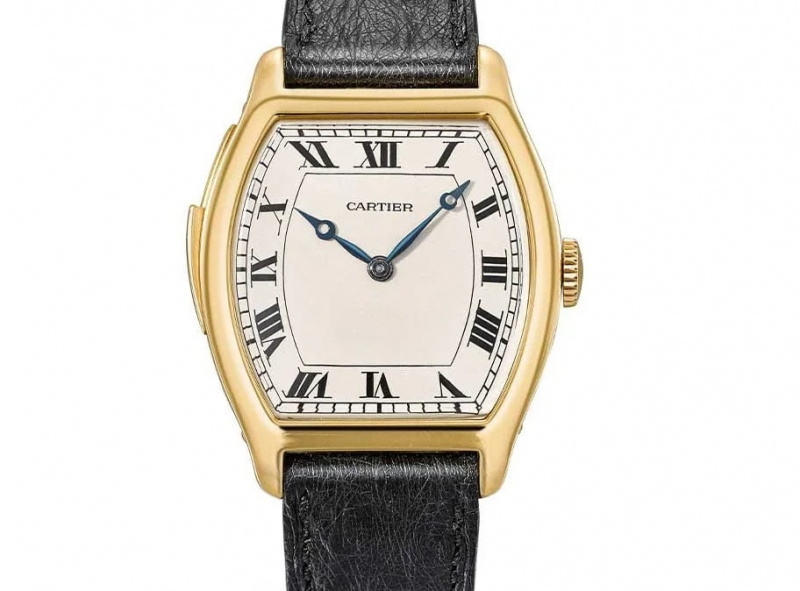
Photo: My Watches Review -
Antiquorum sold this Minute Repeater for $640,500, two years after selling the previous one for over one million Swiss francs. The Second Cartier Tortue Minute Repeater, according to the auction house, is the first known Cartier Minute Repeater, dating from 1928, a year before the previously auctioned example. It's worth noting that the auction house managed to uncover another one two years after claiming to have found the "only Cartier minute repeater from the Art Deco era" (as certified by the Cartier archives). It demonstrates how knowledge and scholarship have evolved over time.
Unlike the previous one, this second Cartier Tortue Minute Repeater had a rhodium-plated M. Cal. 12 1/2"' with fausses côtes ornamentation, 29 diamonds, and a Breguet balance spring. Antiquorum also sold it two years after the initial Cartier Tortue Minute Repeater, for a lower price. The movement was also supplied by European Watch & Clock Co. and measures 30 mm in diameter.
Price: $640,500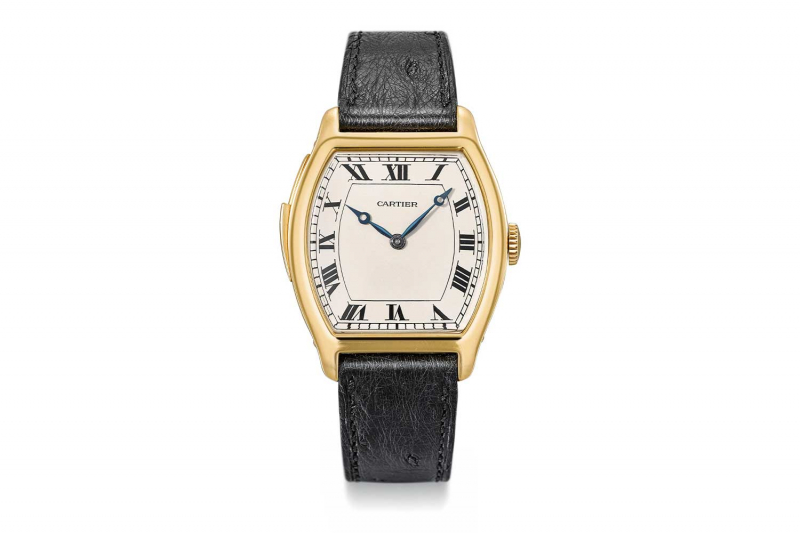
Photo: The Business Times 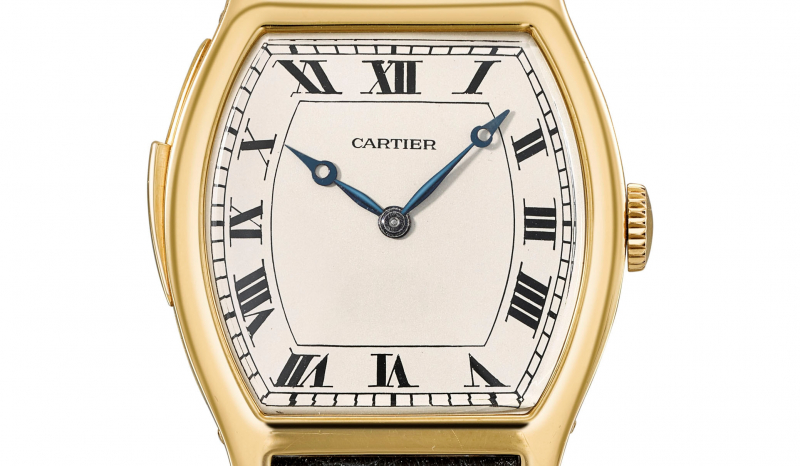
Photo: Christies.com -
We're not going to get into Cartier clock collecting, except to say that they manufactured these completely absurd "mystery clocks” in the 1920s, so-called because the rack-and-pinion system is hidden, giving the impression that the hour and minute hands are floating in mid-air. This clock, which came from the estate of Consuelo Vanderbilt Earl, is one of the most impressive. It is the first of six Portique clocks that were made between 1923 and 1925.
During this time, the East's allure was palpable in Cartier's creative realm. Mystery clock is shaped like a Japanese gate that can be found at the entrance to Shinto temples. The gate is topped with a Biliken, a small mascot with a chubby form and smiling face who conjures up the good spirits who inhabit sacred sites and means "bird perch" in Japanese. The movement of the clock is installed here. The dial appears to be suspended, like a gong.
In 1913, Louis Cartier and renowned clockmaker Maurice Couet collaborated to create the Cartier Mystery Clock. This original 'Pendules Mysterieuses' Model A was a hit at the time, with its captivating use of illusion.
In 2013, Doyle Auction sold this $515,000 rock crystal, gold, black onyx, and enamel clock. It was a world record price at the time and is still one of the most expensive Cartier watches ever sold in auction. While other Cartier mystery clocks have probably fetched bigger amounts since then, this one retains its historical significance.
Price: $515,000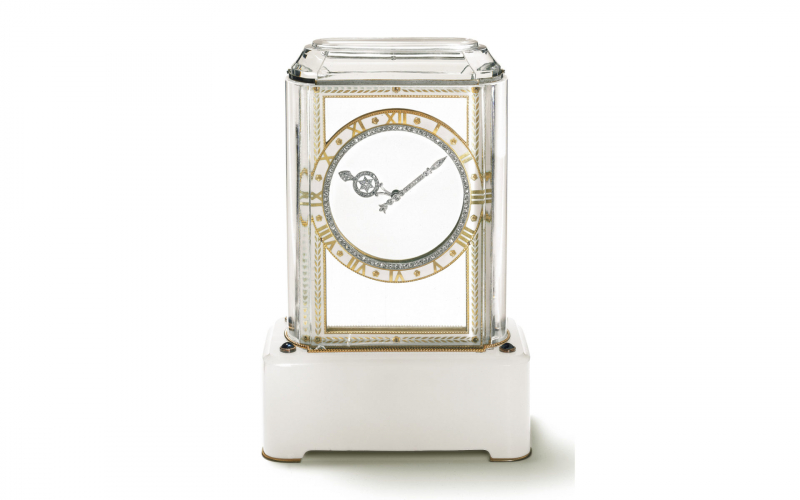
Photo: Galerie Magazine 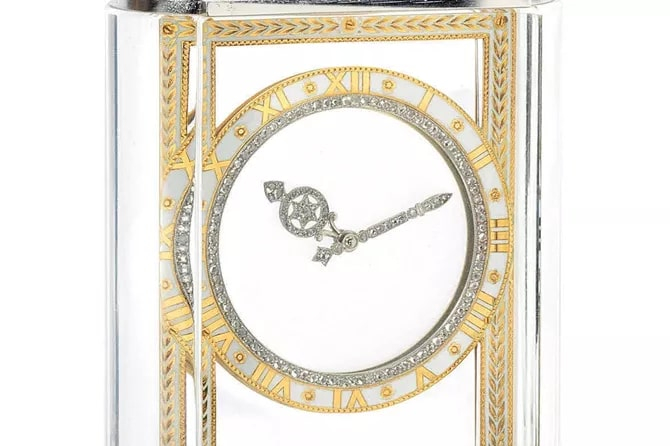
Photo: Invertir en arte -
This clock was significant for belonging to Jacqueline Kennedy Onassis, former First Lady of the United States and wife of John F. Kennedy, and was created in 1962. The Cartier Tank, an 18k yellow gold watch with an 18-jewel manual winding movement, was given to Jackie by her brother-in-law, Prince Stanislaw Radziwill, in 1963. Jackie was well-known for wearing the watch, which can be seen in many of her photographs.
The Cartier Tank is without a doubt one of the most elegant watch designs of all time, as well as one of the most well-known timepieces, making it one of the most iconic timepieces ever created. The case is small, measuring 20mm in width and 28mm in length. The corners have been rounded off, and the cabochon sapphire crown has been shaped in the more classic Tank design, which was rare at the time because Cartier was experimenting with more geometric crown shapes.
All of the prior Cartiers have one thing in common: they're all complicated. This one stands out for another reason: it was once owned by Jacqueline Kennedy Onassis. Christie's sold this Cartier Tank for $379,500 in 2017, together with an artwork by Jackie Kennedy Onassis. Kim Kardashian acquired it, according to later reports, for more than three times the high estimate. To be honest, with Cartier Pebbles currently selling for the same price, it may not have been such an outrageous purchase after all.
Price: $379,500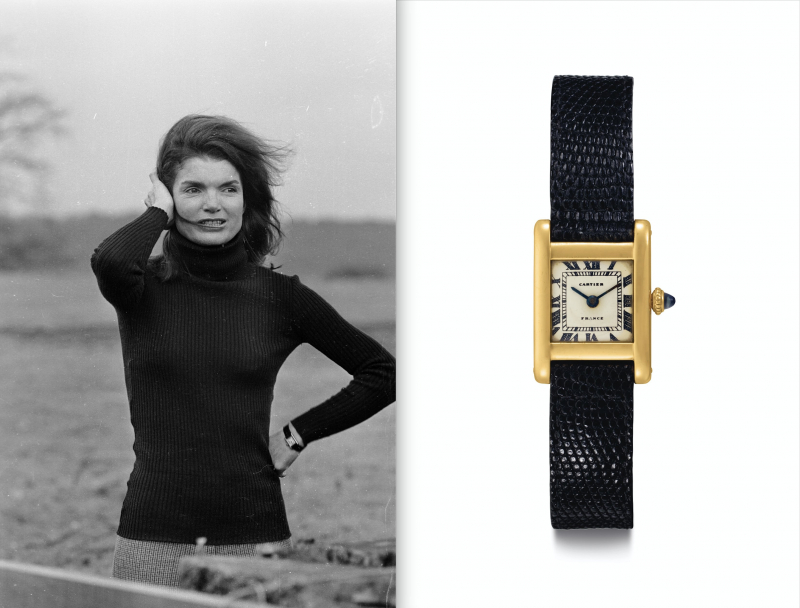
Photo: Alamillo Taqueria 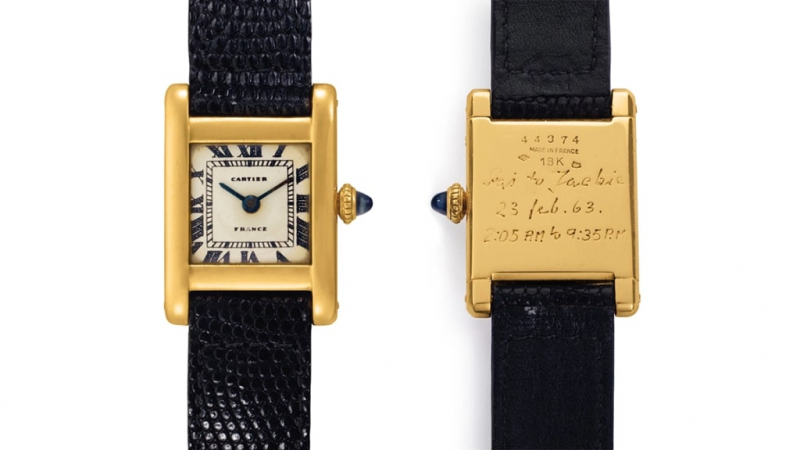
Photo: Robb Report -
Finally, there's a strange Cartier rattrapante single-push button chronograph with a Patek Philippe 13"' manual winding movement and gold Breguet numerals. It was built in the late 1930s and featured a highly advanced rattrapante mechanism for the period. It was a magnificent chronograph, at least in images.
The appeal of the reference 1463 has only grown stronger among collectors since its introduction in 1940. The historical reference is still as popular today as it was when it was first published. Reference 1463 was a forerunner. It is Patek Philippe's sole vintage chronograph model featuring a water-resistant case and circular chronograph pushers. The majority of this item was made of yellow gold, but there were several made of steel and even fewer made of pink gold.
The dial of this split-seconds (rattrapante) chronograph is marked Cartier and includes exquisite gold Breguet numerals that complement the yellow gold casing. It's powered by a Patek Philippe caliber. In fact, it outperformed a Cartier double-stamped Patek reference 1436, which sold for CHF 278,000 in the Magical Art of Cartier sale. Antiquorum in 1996 for CHF 333,500. This watch occupies the last place in the list of most expensive Cartier watches ever sold in auction.
Price: 333,500 CHF ($336,000)
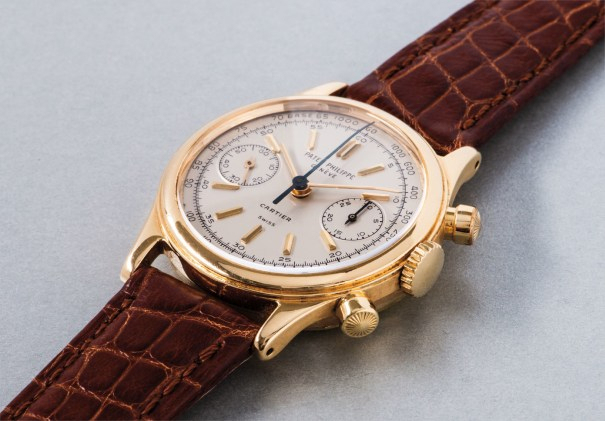
Photo: Phillips 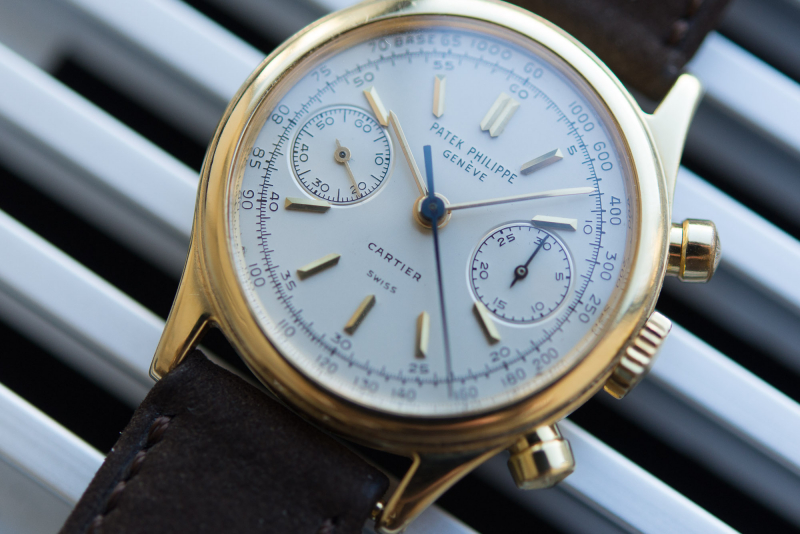
Photo: gmcschahdol.com









